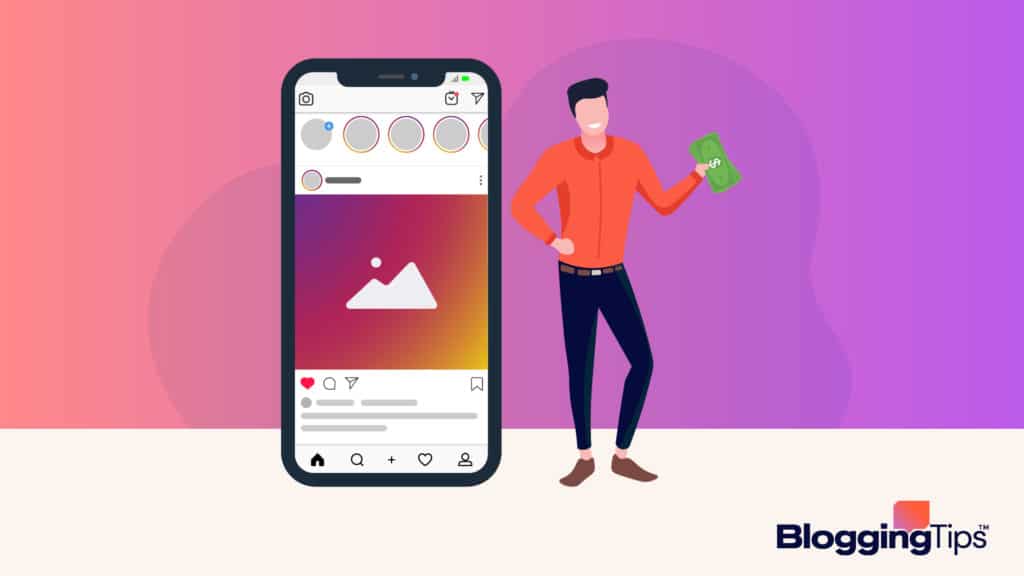You crafted an exciting social media post that you cannot wait to share with your family, friends, and followers.
Maybe it is a business post telling the world about the fantastic new product or service you have to offer.
Or perhaps it’s a cute photo of your kid doing something funny on vacation, and you think everyone should enjoy it.
You hit post and wait for the wave of reactions that are sure to come…
Crickets.
We have all had this happen.
For a personal post, it is disappointing.
But if your business is on social media, this can be downright frustrating.
You know the importance of social media engagement, but how do you improve it?
Keep reading to find out.
Contents
- What is Social Media Engagement?
- Why is Social Media Engagement Important?
- Types of Social Media Engagement
- Best Platforms for Social Media
- Defining “Good” Social Media Engagement
- Examples of Good Social Media Engagement
- How to Boost Social Media Engagement
- Social Engagement Strategies to Try
- Maximizing Your Social Media Audience
What is Social Media Engagement?
Social media engagement is a measurement of people interacting with your content.
Engagement will vary depending on which platform you are using since they each have unique features.

Why is Social Media Engagement Important?
Seventy percent of Americans use social media.
The amount of social media engagement reflects how much your customers connect with your content.
If you post about an exciting new product and get a lot of engagement, it is likely something people can see fitting into their lives.
On the other hand, if you get very little engagement, you may need to course correct a bit in products you offer in the future.
Social media engagement also helps your content to reach a broader audience.
Platforms show engaging content to more people.
Engagement will increase your ranking in search engines, too.
Types of Social Media Engagement
There are endless social media platforms, and each has specific ways to engage with content.
1. Likes and Saves On a Post
Likes are an easy way for viewers to react to your content with a single click.
When a person saves a post, it means they want to be able to find it again later – often to reference valuable information.
2. Comments and Questions
Comments and questions are a valuable type of social media engagement.
Since they require more effort, they show your post truly touched someone.
They also give you the chance to respond and show care and appreciation.
3. Post Shares and Clicks
When someone shares your content, their followers also see what you posted, allowing new people to find your account.
Clicks show the number of times someone clicked on your post – whether to read the entire post or see the photo or video.
4. Mentions
Mentions can be positive or negative, depending on the individual’s opinion and experience with your brand.
Either way, they allow more people to see your content.
Best Platforms for Social Media
There are so many social media platforms these days, but each has unique attributes.
These can help you decide which is the best fit for you and your business.
Here are a few of the most popular:
- Twitter: Twitter’s strength is in constant short messages. Their length is limited, so you do not need much time to create content, but you will need to post often to stay visible.
- Facebook: Facebook allows several types of posts, including text, photos, video, and lives, giving you many ways to reach your audience.
- Instagram: Instagram is an image-focused platform, so if your brand is in a highly visual field – such as art or fashion – you could gain traction on Instagram.
- LinkedIn: LinkedIn focuses on professional relationships, so if that’s your niche market, LinkedIn is a good place for you. Or you can build relationships with other professionals.
Defining “Good” Social Media Engagement
Good engagement on social media can vary by the type of post.
You will have posts that inspire a lot of reaction, and others may be necessary but not as engaging.
If you post about an exciting new service, product, or event, you can expect a higher engagement.
It is a post that people will talk about and share with friends.
If you are closing your store early one day, you post about the change in your business hours, so people will know not to stop by during that time.
It does not mean that the information about your hours is unimportant or is not reaching people.
It is just not something that encourages interaction.
What is a Good Social Media Engagement Rate?
The exact measure of “good” social media engagement is somewhat elusive – and honestly, a bit of a downer.
It sounds like a really small number, but good social media engagement is generally between 1% and 5%.
These numbers seem low, but think about what percentage of the posts you scroll by make you stop and interact with them.
How Do I Measure a Good Social Media Engagement Rate?
There are some mathematics-heavy ways of figuring your social media engagement rate.
However, at its simplest, you can take your number of engagements divided by your number of followers and multiply by 100.
That will give you the percentage of your followers who engaged with a given post.
Examples of Good Social Media Engagement
When looking to grow your social media engagement, it can help to look at what other successful brands are doing on their social media accounts.
1. Slim Jim
Slim Jim’s following grew from 5,000 to 500,000 on Instagram in a year by posting witty memes and seemingly random comments on other social media accounts.
The sheer wackiness of their humor has made it a fun account to follow.
2. GoPro
GoPro lets its followers market for them by posting videos taken by users with their GoPros.
This allows others to see what type of footage they could get if they had a GoPro.
3. Elon Musk
Elon Musk is not ashamed to be completely authentic on social media.
He engages with his followers and consistently shares their posts, letting them advertise for him.
His company Tesla is famous for having an advertising budget of 0.
Instead, word-of-mouth and social media marketing made the company the most valuable automotive company globally in 2020.
How to Boost Social Media Engagement
Below you will find several strategies that can help boost your social media engagement.
The more you incorporate, the more your engagement is likely to increase.

1. Define and Follow a Social Media Strategy
A social media strategy is essentially a roadmap that lays out what to post, when, and on which platform.
It can also help you plan what type of content to post and ensure that you are getting a good mix of engagement posts and sales posts.
Keep reading for more about the importance of that detail.
2. Know Your Audience
Knowing your audience is possibly the most crucial step in marketing, especially on social media.
If you do not know your audience, you cannot effectively engage with that demographic.
Your social media engagement will go down because you are not reaching the right people.
3. Understand the Algorithms
Algorithms are maybe the trickiest part of using social media for your business.
While old-school social media just showed people everything posted by the accounts they followed, these days, it is not so simple.
Social media platforms now show people content based on an algorithm.
This algorithm takes into account various factors, including:
- The popularity of the content
- How recently it was posted
- Type of content
- Relationship of the person to the account posting content
Each platform has its algorithm, and they change from time to time.
Make sure you understand the algorithm for each platform you use and stay updated.
If your engagement suddenly drops from what it was, there may be an algorithm change behind it.
4. Do Keyword Research
When people search for content online, the terms they use in their search are what determines the results they get.
The better your content incorporates these keywords, it will be more visible in the search results.
If you are focusing on a niche market, find out which keywords they are often searching, and you will increase your views and engagement.
5. Produce Quality Content
Quality content matters. You can post consistently, target the right audience, and do everything right.
But if your content is full of errors or dark, blurry photos or videos with poor sound quality, people won’t stick around to look at it, much less engage with it.
6. Establish Social Proof
People look for opinions from others to confirm value. It’s why they read reviews before purchasing a product or ask their friends about their experience at a certain restaurant.
You can establish social proof by sharing testimonials from satisfied customers, sharing how many of an item you’ve sold, and more.
Be creative for your specific brand.
If it shows followers that people are loving what you offer, it establishes social proof.
7. Avoid Being Transactional: Don’t Just Sell
This is where your social media strategy comes in.
If every post is a sales pitch, people won’t engage and will likely unfollow you.
People don’t want to be sold to constantly.
They follow your brand because they are interested in you.
Yes, that includes what you are selling, but it also includes who you are, what you stand for, and the behind-the-scenes of your business.
Make sure your sales posts are scattered among a good number of engaging posts.
A good metric to shoot for is keeping your sales posts to only 10 to 20 percent of your content.
8. Keep the Conversation Going
Take time to interact with followers.
If someone posts a question, answer it.
If they post about how much they love what they bought from you, show them sincere appreciation.
When users see that you respond to comments and questions, they are more likely to comment themselves.
It also demonstrates that you care about them.
In the world of social media that is highly saturated with self-promotion, a brand that demonstrates a true interest in its followers holds tremendous appeal.
9. Leverage Marketing Automation
Social media platforms have tools you can use to make it a bit easier to up your engagement.
For instance, tools that allow you to schedule posts ahead of time let you focus on other projects rather than being tied to the platform.
Another example is automated responses to messages.
If you’re not always able to reply immediately, having an automated message sent back can let the person know that you received their message and will get to it as soon as you can.
10. Track Your Progress and Monitor Your Results
Keeping track of your social media engagement is the only way to improve.
You have to know what is working (and what isn’t), so you know what to do more (and less) of in the future to continue to grow engagement.
Social Engagement Strategies to Try
Want to boost your social media engagement?
Try these proven strategies.

1. Run a Poll
Polls encourage engagement with little effort – either on your part or your followers.
Simply ask a question and give some options of answers.
Your followers only have to click to engage with you and maybe provide valuable feedback, too.
2. Run a Giveaway
Everyone loves getting something for free.
Offering a giveaway in exchange for likes, shares, follows, or comments is a surefire way to get a lot of people doing the very action you request in hopes of being the lucky one chosen.
It doesn’t even have to be something big.
You’d be surprised how many people will engage with you for even a small-dollar item.
3. Try Beta Testing Products and Features
You can increase both your social media engagement and your social proof by offering beta testing to your fans.
They get the benefit of trying out something new, and in return, they share their experience with it, showing other potential customers the value.
You also get valuable feedback on what users like or don’t like about your product.
Maximizing Your Social Media Audience
Social media engagement can be tricky, and it can sometimes feel like your posts are just disappearing into the ether.
Don’t be afraid to try new methods and see how they go.
If they work, then use them more regularly.
If they don’t, then don’t.
If you have any questions about social media engagement, feel free to comment.
Don’t give up.
Implement some of the proven social media engagement strategies discussed here, be consistent, and watch your audience grow.




